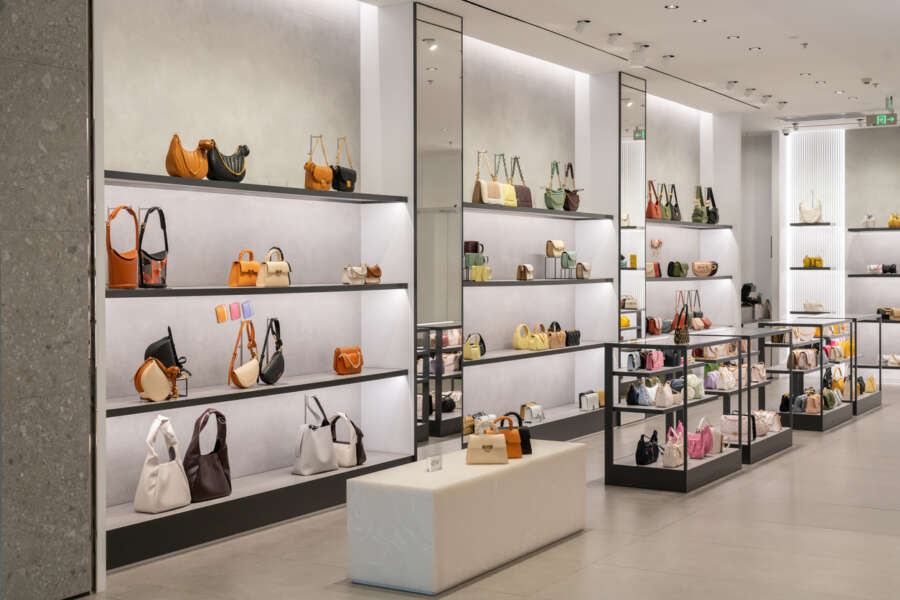By Amy Ramage, founder, MD and Creative Director, Célibataire
Despite all the turmoil and ‘unknowns’ the global economy is facing, figures from GlobalData suggest the global luxury market will grow by 10% in 2022 to reach a value of £118.8bn. According to this same report, the growth will be driven by younger audiences, who are increasingly becoming key stakeholders in the industry. Research from Bain & Company and Farfetch supports this, estimating that millennials will represent 40% of the global personal luxury goods market by 2025.
For luxury, reaching this audience is now pivotal. Yet, while younger consumers might be embedding themselves into these markets, as their buying power continues to evolve, it poses certain challenges. Value needs to be reframed. And luxury’s perhaps typical pain point (or “price point” might be more pertinent) doesn’t come into it. Reaching the new face of luxury will mean doubling down on the values that matter the most to them.
Luxury can be at the forefront of sustainability
Luxury brands influence cultural trends and, as such, hold a lot of power when it comes to accelerating the move toward more sustainable practices in fashion. It’s a natural fit. High-end products have more time and care put into them, making them far longer lasting and their higher price tag more palatable. But this is increasingly making luxury products more attractive to the values-based shopper. According to new research, 56% of Gen Z consumers are willing to pay more for brands that try to have a positive impact on society, and a similar number (53%) will pay more if it’s run in a sustainable way.
However, this generation is also more attuned – and adverse to – greenwashing. So, claiming to commit to a sustainable ethos without putting the legwork in will certainly earn negative favour amongst younger consumers. That means sustainability policies and programmes must be authentic, and embedded into everything the brand does – within the operations and culture, and not just a single product line. In other words, consumers are tired of ‘sustainability’ lip service. They want transparency and honesty, as well as tangible and verifiable results.
Upscaled shopping experiences
Where the digital and real world collide is a real opportunity in luxury because it creates meaningful experiences that differentiate it from lower price points. A recent study found that 70% of people already familiar with the metaverse are interested in shopping for luxury goods there. Moreover, of all the generations, millennials (76%) and Gen Z (69%) by far topped the list. And this is happening in practice too. Just this year, luxury brands – amongst other household brands and designers – took part in the first-ever Metaverse Fashion Week. And as its slogan describes, it could very much suggest this is “the next chapter of fashion”.
And more generally, luxury brands have been some of the first movers regarding all digital frontiers of fashion. Not just in the metaverse but in the use of AR, VR, and NFTs. But what’s so powerful about luxury and technology’s collaboration is that it can drive accessibility. For example, Balmain created a Web3 hub, which allowed open access to exclusive products and experiences. It aimed to democratise fashion, with an additional concert live-streamed on Balmain.com. The simple act of making the runway available to anyone with a screen is a pivotal step in driving accessibility in the sector overall.
Taking technology and making it seamless
Technology doesn’t just create innovative fashion. It establishes what Gen Z expects. In other words, flawless digital functionalities across all channels are expected and absolutely the norm. It’s about applying new tech to provide an effortless and enjoyable experience. For example, Célibaitaire recently supported By Terry with the expansion of its ‘bespoke powder bar’. The system helped staff not only enable them to create palettes for consumers in-store but more simply upsell connected products online. Essentially, it’s all about ease of use. Everything should feel interlinked and natural for the digitally savvy.
Gen Z and Millennials mean business
Essentially, it’s not just future projections – Gen Z and millennial luxury purchases made up 60% and 63% of the total luxury market sales, respectively (from Feb 2021 to Feb 2022). So, this is not a consumer cohort to play around with. Changes will need to be made to understand how to connect with and reach them.
That is intuitive and connected online experiences and the use of innovative technology in a way that promotes accessibility. Finally, sustainability, in particular, cannot be an afterthought. It must be transparent and backed by proactive action. In other words, luxury’s biggest challenge is coming, and it has a, perhaps surprisingly, young face. But it won’t be a surprise for too long – the time to adapt is now.
